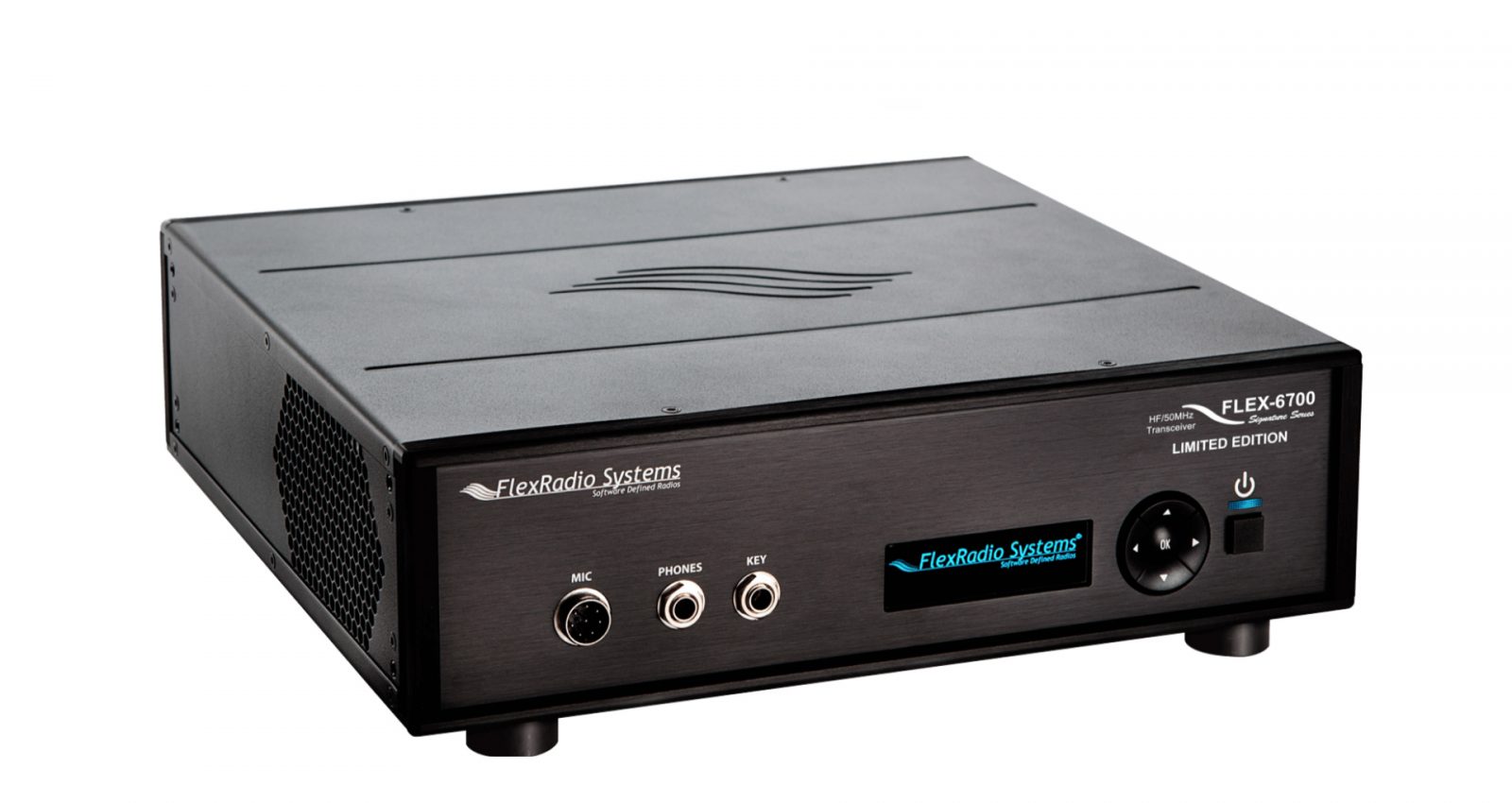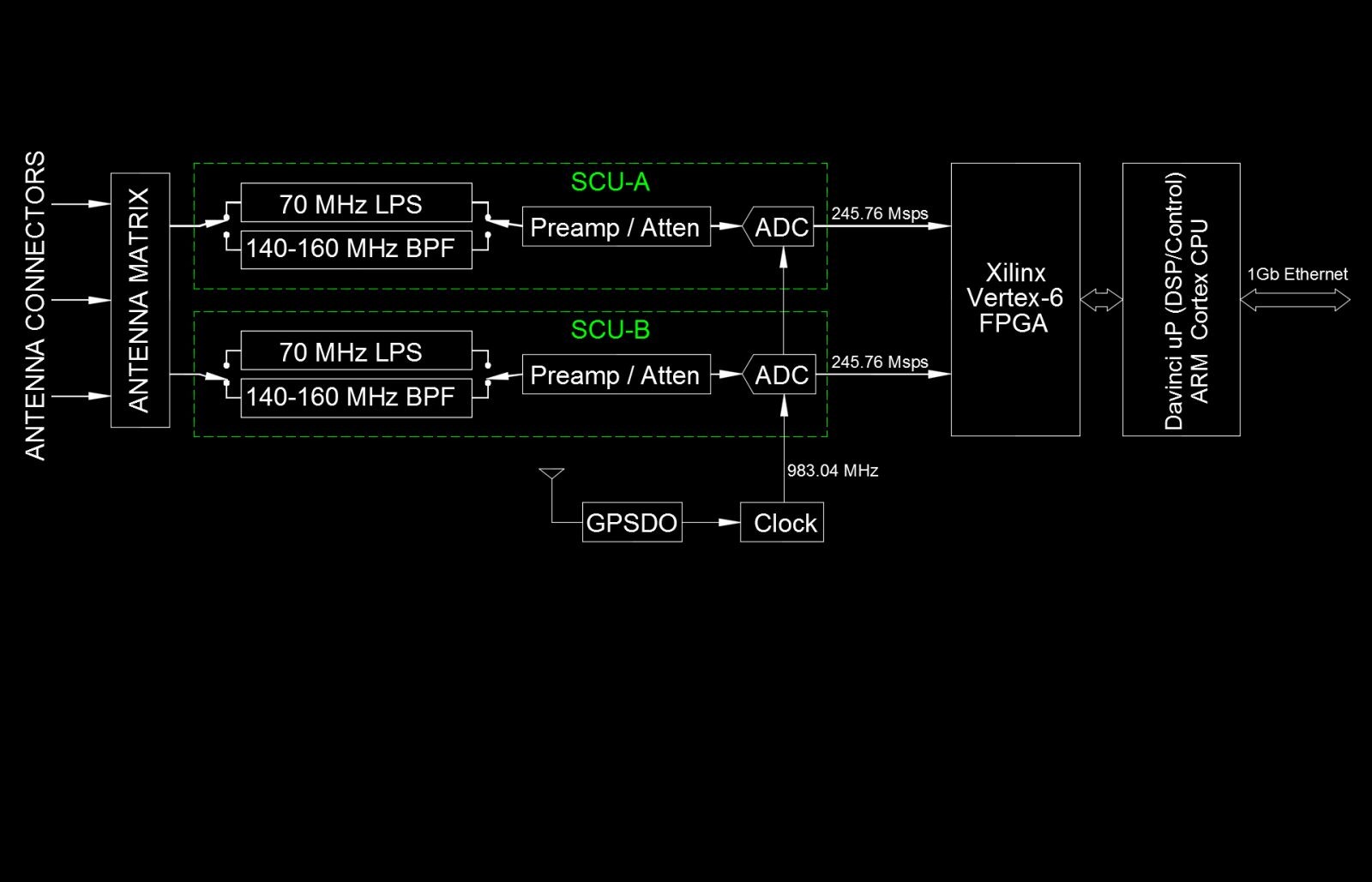Flex 6700








FOR SALE !
Receiver Coverage:
30 Khz – MHz, 135 MHz – 170 MHz
The Nyquist sampling theorem states that an analog signal waveform may be uniquely reconstructed, without error, from samples taken at equal time intervals as long as the sampling rate is equal to, or greater than, twice the highest frequency component in the analog signal. This minimum sampling rate is called the Nyquist Sampling Rate. If the Nyquist criterion is not met, aliasing will occur.
The Flex-6700 samples at 245.76 MHz, so Nyquist tells us that the highest frequency that it can faithfully reproduced is 122.88 MHz. That gets us up through six meters, but not 2 Meters (144-148 MHz), which is above the Nyquist sampling rate…
Signals above the Nyquist sampling rate will be shifted down in frequency or “aliased”. This could cause total chaos since they will be indistinguishable from non-aliased signals. That will be dealt with using anti-aliasing filters. More about that in a minute…
This is a block diagram of the entire Flex 6700 Receiver. This architecture is called “Direct Sampling”, or “Direct to Bits”, since the RF is digitized directly and there is no analog downconversion which adds noise and distortion.
There are a total of four antenna ports and oneTransconverter port on the back of the radio. The operator can route any one of them to either Spectral Capture Unit (SCU). The Antenna Matrix is shown on the left side of the diagram…
At its heart are two identical blocks called SCU’s (Spectral Capture Units). Each is fed by a common antenna matrix so the operator can select from several antennas or a transverter input. Next zre two anti-aliasing filters. Following the filters a wideband amplifier or an attenuator can be selected to insure that the input level is matched to the Analog-to Digital Converter (ADC). That’s the entire analog portion of the radio. There are no oscillators or mixers which add noise and distortion. The RF goes directly into the digital domain. This is called Direct Sampling.
Remember that the Nyquist Theorem states that any signal that is not sampled at least twice its maximum frequency will be aliased and folded back and shifted down in frequency. Aliased signals would be impossible to tell from non aliased signals, so they need to be separated before they are digitized. That’s where the Anti-Aliasing Filters come in… The Flex 6700 proces the spectrum in two blocks – 0-70 MHz and 135-170 MHz.
If 0 to 70 MHz will be processed, then a 0-70 MHz low-pass filter is automatically selected, and no under-sampled signals will pass to the ADC. If 135-170 MHz is selected, then a bandpass filter is selected which will exclude all oversampled signals.
RF is fed directly into the Analog to Digital COnverters (ADC’s) with no frequency down-conversion. THat puts a huge demand on the ADC’s because they must operate at a very high sample rate,and that raises the cost of those components, but it produces the cleanest possible signals in the digital domaine.
Any instability or timing inaccuracy will be reflected directly into the quality and accuracy of the digitized signals. Those timing signals must be extremely stable and accurate. To inure that, the Flex 6700 uses an ovenized crystal oscillator to control the master clock. It also provides an external 10 MHz input on the back panel so that the radio can be phase-locked to an even better timing source. I use a GPS Disciplined Oscillator which provides milliHertz accuracy.
The combined output of the two ADC’s is almost 8 billion bits per second! That stupendous number of ones and zeros accurately defines every single signal in the blocks of spectrum being processed. The Xilinx FVertex-6 PGA and the Texas Instruments davinci processor do all od the processing. Only video is passed to the PC via an ethernet port. User commands return via the same path…
As a user you have access to the two Spectral capture Units which can both be on either the 0-70 MHz or the 135-170 MHz portion of the spectrum, or one can be on each.
We have a total of 8 Spectrum Display Units (SDU’s) , which consist of a waveform display and a waterfall. The bandwidth of each can be anywhere up to 14 MHz wide. These can be distributed as needed across one or both SDU’s.
Lastly, we have a total of 8 virtual receivers that can also be distributed as necessary across the SDU’s.
In the accompanying videos you will see an example of a configuration using both SCU’s, both SCU’s, and all 8 receivers. One SCU is on 0-70 MHz and the other is on 135-170 MHz. Each has a single SDU – one is set to capture 41.9 to 42.8 MHz and the other is set to 153.55 to 156.4 MHz.
Each SDU has four receivers set to narrow-band FM, with sub-audible tone squelches set. The first four receiver are monitoring the local Highway Patrol, and the second set of 4 are monitoring Law Enforcement, Fire, and EMS. Unlike a typical scanner, the Flex 6700 is monitoring all eight pepeaters simultaneously. See the video for a demonstration…